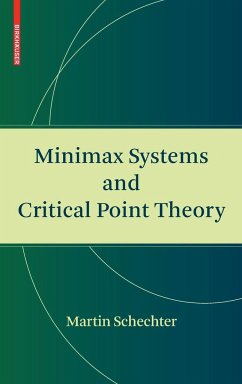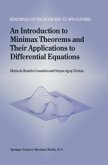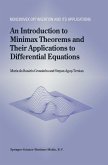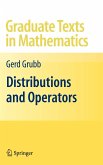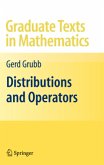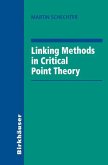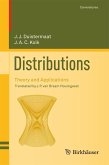Many problems in science and engineering involve the solution of differential equations or systems. One of most successful methods of solving nonlinear equations is the determination of critical points of corresponding functionals. The study of critical points has grown rapidly in recent years and has led to new applications in other scientific disciplines. This monograph continues this theme and studies new results discovered since the author's preceding book entitled Linking Methods in Critical Point Theory.
Written in a clear, sequential exposition, topics include semilinear problems, Fucik spectrum, multidimensional nonlinear wave equations, elliptic systems, and sandwich pairs, among others. With numerous examples and applications, this book explains the fundamental importance of minimax systems and describes how linking methods fit into the framework.
Minimax Systems and Critical Point Theory is accessible to graduate students with some background in functional analysis, and the new material makes this book a useful reference for researchers and mathematicians.
Review of the author's previous Birkhäuser work, Linking Methods in Critical Point Theory:
The applications of the abstract theory are to the existence of (nontrivial) weak solutions of semilinear elliptic boundary value problems for partial differential equations, written in the form Au = f(x, u). . . . The author essentially shows how his methods can be applied whenever the nonlinearity has sublinear growth, and the associated functional may increase at a certain rate in every direction of the underlying space. This provides an elementary approach to such problems. . . . A clear overview of the contents of the book is presented in the first chapter, while bibliographical comments and variant results are described in the last one. -MathSciNet
Hinweis: Dieser Artikel kann nur an eine deutsche Lieferadresse ausgeliefert werden.
Written in a clear, sequential exposition, topics include semilinear problems, Fucik spectrum, multidimensional nonlinear wave equations, elliptic systems, and sandwich pairs, among others. With numerous examples and applications, this book explains the fundamental importance of minimax systems and describes how linking methods fit into the framework.
Minimax Systems and Critical Point Theory is accessible to graduate students with some background in functional analysis, and the new material makes this book a useful reference for researchers and mathematicians.
Review of the author's previous Birkhäuser work, Linking Methods in Critical Point Theory:
The applications of the abstract theory are to the existence of (nontrivial) weak solutions of semilinear elliptic boundary value problems for partial differential equations, written in the form Au = f(x, u). . . . The author essentially shows how his methods can be applied whenever the nonlinearity has sublinear growth, and the associated functional may increase at a certain rate in every direction of the underlying space. This provides an elementary approach to such problems. . . . A clear overview of the contents of the book is presented in the first chapter, while bibliographical comments and variant results are described in the last one. -MathSciNet
Hinweis: Dieser Artikel kann nur an eine deutsche Lieferadresse ausgeliefert werden.
From the reviews:
"The monograph has seventeen chapters and an extensive bibliography very useful for further reading. ... this is a very interesting monograph written by a well-known expert on min-max techniques and critical point theory. ... The monograph provides a comprehensive overview of a rapidly growing side of modern analysis and should be recommended as a valuable source to everybody-pure or applied mathematician, upper level graduate student-who is interested in critical point theory and applications to differential equations." (Salvatore A. Marano, Mathematical Reviews, Issue 2010 e)
"The aim of the present book is to expose in a unified way some new methods and results ... . The book is rather elementary, being accessible to students with a background in functional analysis. ... The author proposes some very general and unitary approaches to find critical points and exposes them in a clear and sequential way. The book can be recommended for researchers in applied functional analysis, partial differential equations and their applications." (Cornel Pintea, Studia Universitatis Babes-Bolyai, Mathematica, Vol. LV (4), December, 2010)
"This clearly written monograph is devoted to some of the principal methods of critical point theory and its application to nonlinear systems with a variational structure. ... An index makes the use of the book more easy and the bibliography contains 160 references. ... In conclusion, the reviewer may recommend the book by Schechter as a very good reference for those seeking new, modern, and powerful techniques in the critical point theory approach of nonlinear differential and partial differential equations." (Vicentiu D. Radulescu, Zentralblatt MATH, Vol. 1186, 2010)
"The monograph has seventeen chapters and an extensive bibliography very useful for further reading. ... this is a very interesting monograph written by a well-known expert on min-max techniques and critical point theory. ... The monograph provides a comprehensive overview of a rapidly growing side of modern analysis and should be recommended as a valuable source to everybody-pure or applied mathematician, upper level graduate student-who is interested in critical point theory and applications to differential equations." (Salvatore A. Marano, Mathematical Reviews, Issue 2010 e)
"The aim of the present book is to expose in a unified way some new methods and results ... . The book is rather elementary, being accessible to students with a background in functional analysis. ... The author proposes some very general and unitary approaches to find critical points and exposes them in a clear and sequential way. The book can be recommended for researchers in applied functional analysis, partial differential equations and their applications." (Cornel Pintea, Studia Universitatis Babes-Bolyai, Mathematica, Vol. LV (4), December, 2010)
"This clearly written monograph is devoted to some of the principal methods of critical point theory and its application to nonlinear systems with a variational structure. ... An index makes the use of the book more easy and the bibliography contains 160 references. ... In conclusion, the reviewer may recommend the book by Schechter as a very good reference for those seeking new, modern, and powerful techniques in the critical point theory approach of nonlinear differential and partial differential equations." (Vicentiu D. Radulescu, Zentralblatt MATH, Vol. 1186, 2010)

